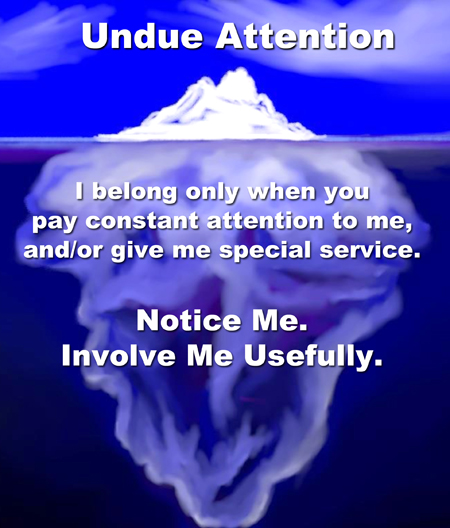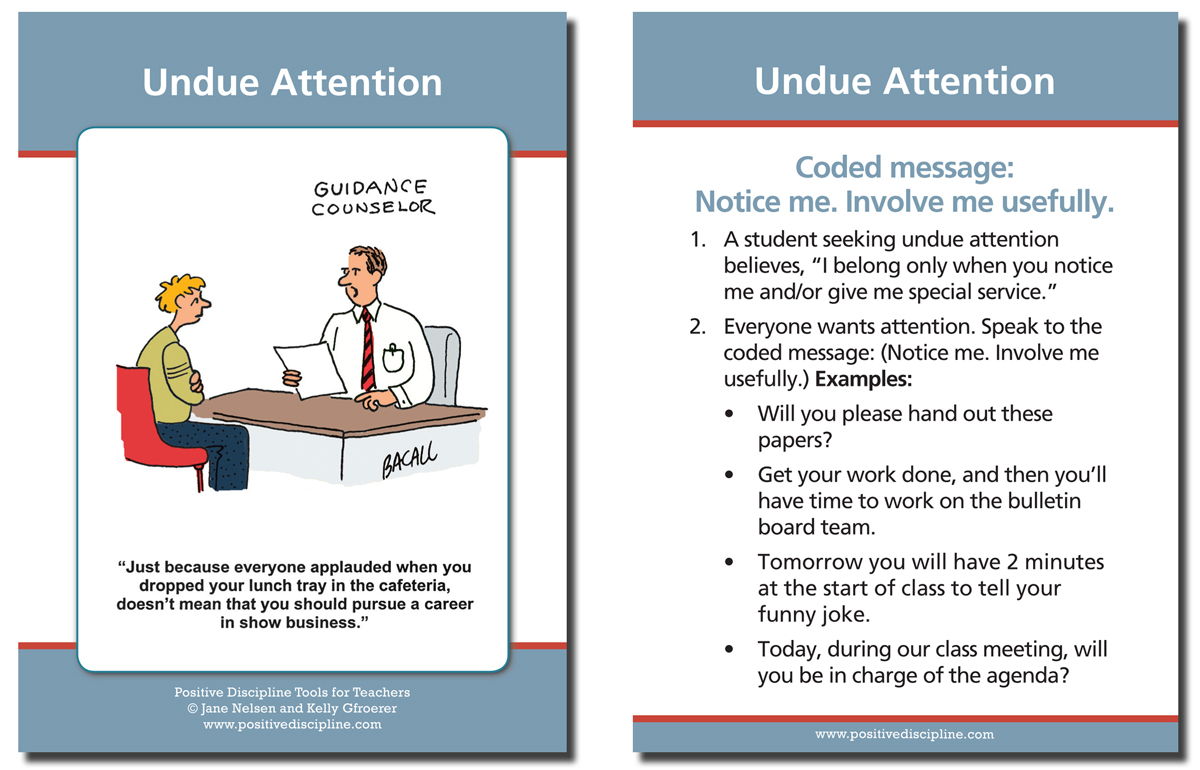Everyone wants attention. It’s part of human nature. Adler and Dreikurs long ago pointed out the fundamental human need to feel belonging and connection. The problem arises in classrooms when students seek attention in negative ways because of their mistaken beliefs about how to gain a sense of belonging. The Mistaken Goal of Undue Attention occurs when students have the belief that, "I'm okay only if I get attention."
On the Mistaken Goal Chart we point out that it is your feelings (second column) that give you the first clue to understanding the "mistaken goal. Many teachers ask, "Why do my feelings help me understand the child's mistaken goal?" It is because your feelings indicate your "reaction" to the misbehavior. When you respond to a student's behavior by feeling irritated, annoyed, worried, or guilty, it is likely that his or her mistaken goal is Undue Attention.
Understanding the purpose behind the student’s misbehavior can help you find the most effective tool. For example, since the coded message of undue attention seeking is “notice me involve me usefully,” involving the student in class jobs can help him or her feel a greater sense of belonging and connection and as a result decrease negative attention seeking behavior.
Our iceberg analogy provides a visual than can help you understand your students’ Mistaken Goal of Undue Attention.

A teacher from China shared the following example:
One of my 5th grade students interrupts and makes noises many times in class. I feel annoyed and irritated. I have to remind him to behave constantly. My response comes close to the description of Undue Attention. He stops temporarily, but later resumes the same or another disturbing behavior.
I was surprised to see that his mistaken belief might be, "I belong only when I’m being noticed or getting special attention.
When I realized that his coded message is, "Notice me. Involve me usefully," I chose to try to “Redirect by involving the child in a useful task. “ I asked him to pass out or collect papers, or help me find the appropriate props for my class.
He behaved well afterwards, with much less or even no interruptions. He even previewed our books and then made some props all by himself! These were great contributions to the class.
Tool Tip
Speak to the coded message by guiding your students to gain attention usefully. Following are a few examples:
- Will you please hand out these papers for me?
- Get your work done, and then you’ll have time to work on the bulletin board team.
- Tomorrow you can take 2 minutes at the start of class to tell your funny joke.
- Today, during our class meeting, will you be in charge of the agenda?
by Dr. Jane Nelsen and Dr. Kelly Gfroerer


